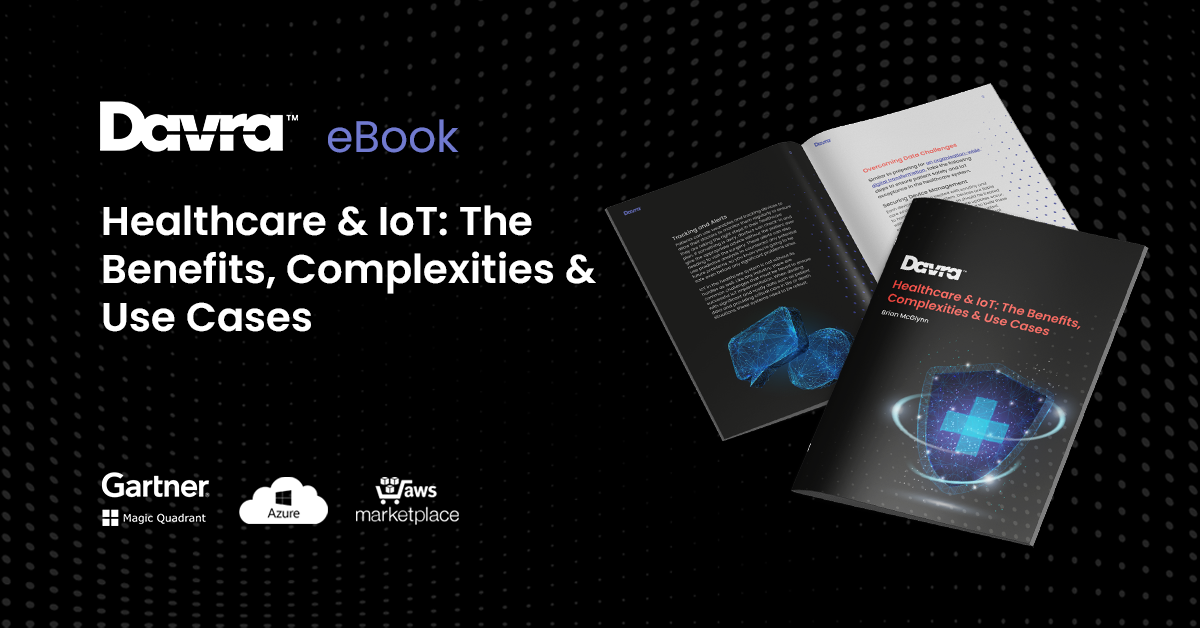IoT in Healthcare Use Cases eBook
Download Your Free IoT in Healthcare Use Cases eBook
Read More


Up until now, when a machine breaks down onsite, an engineer is sent to see what the problem is. The problem might not be apparent to those operating the machine miles away, so a lot of guesswork is put into this disconnected environment. This can cost organisations thousands, while also potentially putting their valued customers or client output at risk.
It doesn’t have to be this complicated or costly.
Remote monitoring is another fantastic aspect of how IoT can transform our industrial and manufacturing processes.
Remote monitoring caters to operational equipment and processes to be scanned for flow, pressure, water quality management and control, or whatever states you need to detect, so your system can be aware of any changes. This allows for troubleshooting from afar in conjunction with local facilities managers.
When something happens, they can send the right personnel down immediately, without the bother around trying to figure out who would be the right person for the job.
Whether you have an underground mine in Siberia, or are managing multiple manufacturing plants and need to control all of them from one remote location, remote monitoring can be of huge assistance to your arsenal of tools.
Although these tools and monitoring techniques have been around for decades, IIoT is bringing connectivity and, more importantly, collaboration, to new heights.
When a piece of equipment goes down in the mine and the system alerts, it can still be a scramble to find the right person to call to investigate. IoT analytics can cater to these issues through connecting with instant messaging platforms to call in a team relating to that process or piece of equipment, who can then make an unanimous decision in their groupchat on who to send to do the job. Diagnostics can be run and reported in an instant to give the team the required information, ensuring they don’t waste anymore time making quick decisions.
COVID-19 has only elevated the need for remote monitoring, as the global pandemic has put a stop to indoor gatherings. People simply must keep their distance or else they risk spreading the virus.
This has accelerated the need not only for remote monitoring, but also for collaboration amongst teams, and departments that may have been siloed before.
1. Decentralised Systems
Remote monitoring systems ensure organisations collaborate and bring all of their resources into one pool. Creating a centralised system enables quick incidence-response times, gather information quickly no matter your location, and then relay that to the right engineers and teams to fix any problems. Centralising this data allows you to compare different locations and how to improve their operational effectiveness.
2. Team & Department Siloes
Organisations that carry out multiple levels of work across a large geographical range can often naturally slip into siloes because of their sheer vastness and differences in work. Remote monitoring allows for departments to get together to discuss how they can operate as one to complement each other, be it for predictive maintenance or how their operations overlap and produce results quicker.
Remote monitoring also caters to digital collaboration through the use of team messaging, therefore solidifying relationships between departments when an incident occurs.
3. Slow Incidence Response
Even before remote monitoring, there was regular monitoring which was clunky, confusing and didn’t produce the outputs needed to make effective decisions. With remote monitoring, predictive maintenance is often tied in with the tracking of equipment, plants and the atmosphere to get detailed information on the issues. With this breadth of knowledge comes fast and accurate responses, with the right people to deliver the help.
4. High Costs
When there is an unexpected power outage, or equipment falls into disrepair, or there’s an unprecedented gas leak in a mine, the costs of downtime and the follow up repairs can be astronomical. With remote monitoring along with predictive maintenance, these costs can be offset by being prepared for the worst, perhaps even offsetting these faults because organisations can deal with the minor problems before they escalate.
Remote monitoring is only going to increase in popularity as IT and OT costs come down, along with the pandemic keeping us all at home. Remote monitoring allows companies to gain a competitive edge over their competitors, as companies who utilise this powerful asset will not only reap the rewards of cost-saving and team collaborations, but can then start to produce established products and services. If you would like to discuss how we build remote monitoring into our IIoT platforms, please contact us for more information today.
Brian McGlynn, Davra, COO
Download Your Free IoT in Healthcare Use Cases eBook

Davra IoT is the only Industrial IoT Platform Available on AWS Marketplace
Read MoreThe Collaboration of Humans & Robots Has Created The Cobot
Read More